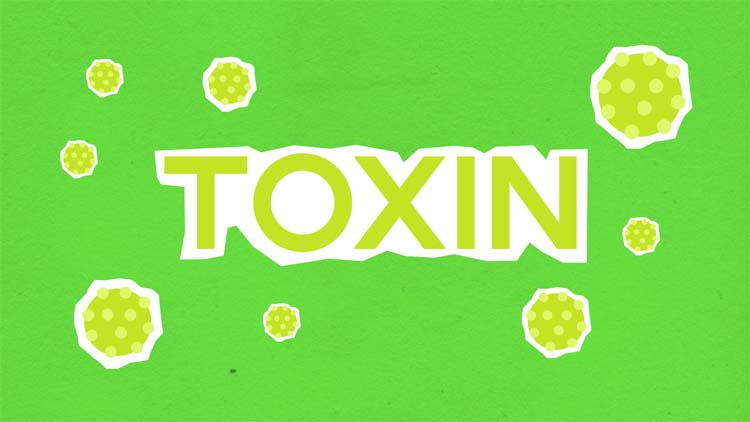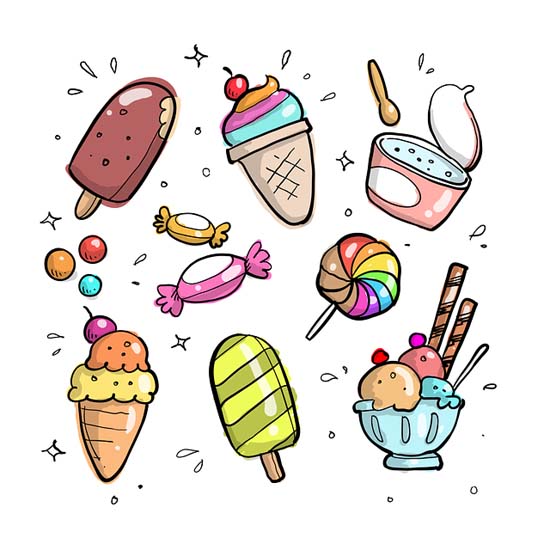TOXINS ARE EVERYWHERE!
Toxins are everywhere! Food recalls and dire warnings about the staggering array of chemicals we are exposed to daily, from personal care items and cleaning supplies to air pollutants, medications, food, and water, can be overwhelming. We hear about it every day in the news and on the Internet. But should we be overly concerned?
EVERYDAY EXPOSURE
TO CHEMICAL TOXINS
We have heard it all before…Aluminum lurking in antiperspirants, perchloroethylene residues clinging to our dry-cleaned garments, flame retardants on our couches as we binge watch TV, artificial sweeteners and flavors, food dyes, monosodium glutamate, paradichlorobenzene in urinal cakes, hexane in our cooking oils.
How about volatile organic compounds in paints, antibiotics in our meat, or bisphenol A found in cash register receipts and dental fillings?
There is even more. Titanium dioxide nanoparticles in sunscreen, UV exposure without protection, high fructose corn syrup, and diesel exhaust. We also have diacetyl in popcorn flavoring, aflatoxins on peanuts, and cobalt and chromium leaching from medical implants. PCBs can be found in window caulking.
Hair dyes often contain paraphenylenediamine, and baby carrots may have chlorine residues. And let’s not forget petrolatum in our skincare, lip care, and hair products, artificial musk in fragrances, and butylated hydroxytoluene in cosmetics.
Prescription medications can even make their way into our tap water. Carcinogens can seep from crumb rubber in artificial turf and nonoxynol is present in some detergents. We also encounter brominated vegetable oil in drinks, polycyclic aromatic hydrocarbons in driveway sealants, methylene chloride in paint strippers, acrylonitrile in synthetic fabrics, and dioxane in bubble baths.
The list of chemicals to worry about extends even further. What about arsenic found in rice or phthalates lurking in our shower curtains, nail polish, and children’s PVC toys?
Then there’s sodium lauryl sulfate in shampoos, mercury in dental fillings and fish, mycotoxins in cereals, the presence of E. coli in meat, listeria in cold cuts, salmonella in eggs, parabens in cosmetics.
Not to mention lead in lipstick, antimony in bottled water, gluten in wheat, estrogens in soy hormones in milk, benzopyrenes in steak, acrylamide in potato chips, pesticide residues on fruits, and formaldehyde emissions from wrinkle-free shirts or particle board kitchen cabinets.
TOXINS FROM
FOOD CONTACT MATERIALS
Even more concerning might be the variety of materials that can interact with our food and beverages before they reach our mouths, especially as they travel through plastic or metal pipes and encounter an array of processing equipment, from slicers to conveyor belts.
Our food and drinks are packaged in containers made of glass, paper, plastic, or metal, often adorned with various inks and adhesives. These food contact materials themselves are created through the use of a vast array of chemicals, especially in the case of plastics.
Even the production of paper involves around 2100 different chemicals, including pigments, bleaching agents, and coatings.
SENSATIONALISM ABOUNDS
The sensationalism elicited by scientific studies that have been published addressing the issues surrounding the everyday toxins we are exposed to can cloud the facts. The reality is that we encounter a multitude of potential toxins in various combinations, making it nearly impossible to determine their effects at the levels we experience.
Many of the chemicals we are exposed to daily may be carcinogenic or harmful in some way to our bodies, but it is crucial to understand that the mere presence of a chemical does not automatically imply a risk.
A good example of this would be coffee which contains over 1,000 different compounds including carcinogens like acrylamide, furfural, and benzopyrene, yet it is not linked to cancer. This highlights the fact that even with carcinogens, the amount we consume is crucial.
WHAT SHOULD WE DO?
While it is important to minimize exposure to harmful substances like bisphenol A, phthalates, pesticides and known carcinogens, the focus should be on addressing these concerns at the manufacturing stage. The real harm that is done to the health of consumers is when we become overwhelmed trying to dodge toxins and the stress that comes with this pursuit.
Moderation may be the answer. Chemicals may leach from plastics used in the microwave, so it is wise to opt for glass or ceramic containers when reheating. It does not mean we must avoid using a microwave. And we can minimize our contact with foods or drinks that contain questionable chemicals. We don’t have to completely stop eating or drinking them.
It is the level of the chemical toxins we consume that is important. Don’t be too concerned about alarmist and unfounded statements. Do your own research and do what feels right for your own wants and needs and live your life to the fullest.
SUMMARY
The takeaway from this article can be summarized in 2 sentences...
- The mere presence of a chemical toxin does not automatically imply a risk.
- It is the LEVEL that we consume that is important.
Please note: Some of the information contained here was used with permission from the McGill University Office for Science and Society.
"The Cleanest Clean You've Ever Seen."
by
ABC Oriental Rug & Carpet Cleaning Co.
130 Cecil Malone Drive Ithaca, NY 14850
607-272-1566








